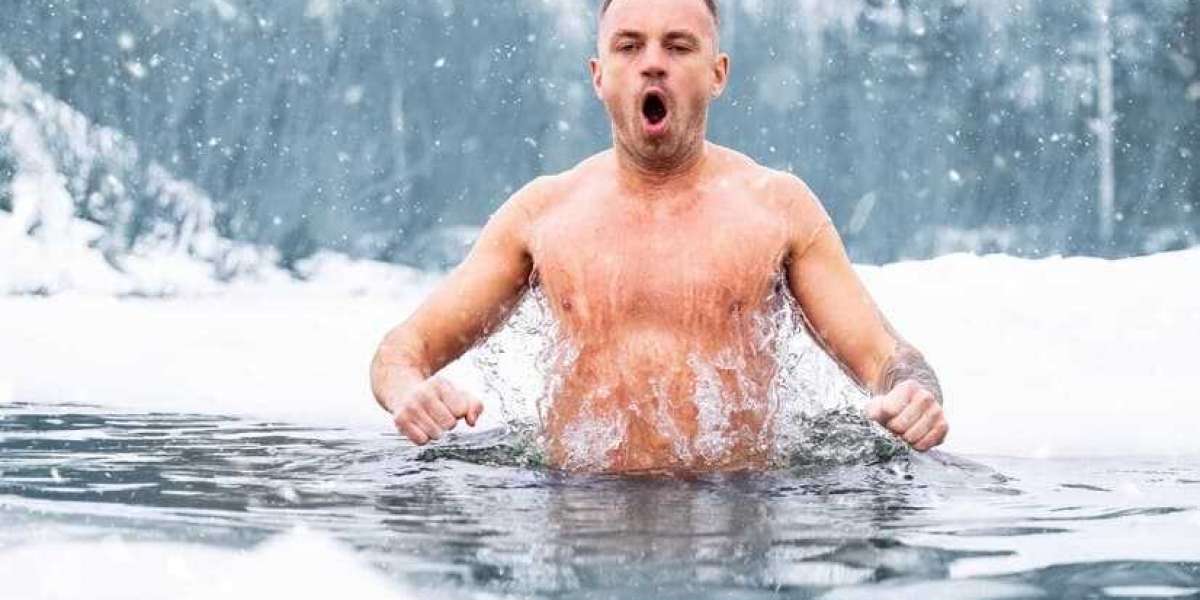In recent years, cold plunge therapy has gained significant popularity as a method for enhancing overall health and well-being. This practice, which involves immersing the body in cold water, is not just a trend among elite athletes but has also made its way into mainstream wellness routines. With a multitude of potential health benefits, cold plunge therapy is worth exploring for anyone looking to improve their physical and mental well-being. This article will delve into the science behind cold plunge therapy, its numerous advantages, and practical tips for incorporating it into your wellness routine.
Understanding Cold Plunge Therapy
Cold plunge therapy, also known as cold water immersion, involves submerging the body in water at temperatures typically below 60°F (15°C). This practice can take place in various settings, including ice baths, cold showers, and specially designed plunge pools. The cold exposure triggers a physiological response in the body that can provide numerous health benefits.
The Science Behind Cold Exposure
When the body is exposed to cold water, several physiological changes occur. Initially, blood vessels constrict (a process called vasoconstriction), reducing blood flow to the skin and extremities. This helps preserve core body temperature. As the body adapts, these blood vessels dilate (vasodilation) once the individual exits the cold environment, increasing blood flow and delivering oxygen and nutrients to tissues. This process can promote recovery and enhance overall health.
Benefits of Cold Plunge Therapy
1. Enhanced Recovery
One of the most notable benefits of cold plunge therapy is its ability to accelerate recovery after intense physical activity. Athletes frequently use cold water immersion to reduce muscle soreness and inflammation following workouts. The cold helps to numb pain and decrease swelling, allowing for a quicker return to training and improved performance.
2. Improved Circulation
Cold plunge therapy can enhance circulation by promoting vasoconstriction and subsequent vasodilation. This process improves blood flow, allowing for better oxygen delivery to muscles and tissues. Improved circulation can lead to enhanced energy levels, quicker recovery, and better overall cardiovascular health.
3. Boosted Immune Function
Regular exposure to cold water has been shown to stimulate the immune system. Cold plunge therapy can increase the production of white blood cells, which play a crucial role in fighting infections and diseases. This immune boost can lead to a reduced risk of illness and improved overall health.
4. Increased Mental Resilience
The initial shock of cold water can be a mental challenge, but many individuals find that overcoming this discomfort builds mental resilience. Regularly practicing cold plunge therapy can help individuals develop a greater tolerance for discomfort and stress, enhancing overall mental fortitude.
5. Stress Reduction
Cold plunge therapy has been linked to reduced levels of cortisol, the hormone associated with stress. The invigorating effects of cold water can lead to improved mood and a sense of well-being. Many individuals report feeling refreshed and rejuvenated after a cold plunge, making it an effective tool for managing stress.
6. Enhanced Sleep Quality
Exposure to cold water can also improve sleep quality. The drop in body temperature after a cold plunge can signal to the body that it’s time to rest. Additionally, the relaxation and stress relief experienced during and after a cold plunge can contribute to better sleep. Individuals who incorporate cold plunge therapy into their nighttime routine may find it easier to fall asleep and stay asleep.
7. Skin and Hair Health
Cold water immersion can lead to improved skin and hair health. The cold helps to tighten pores and reduce inflammation, resulting in a clearer complexion. Additionally, cold water can enhance hair shine and strength by closing the hair cuticles, making it a natural way to promote healthier hair.
8. Weight Management
While cold plunge therapy should not be viewed as a primary weight loss strategy, it can contribute to metabolic health. Exposure to cold can activate brown adipose tissue (BAT), which burns calories to generate heat. Regular cold exposure may support metabolic function and help maintain a healthy weight when combined with a balanced diet and exercise.
How to Incorporate Cold Plunge Therapy into Your Routine
1. Start Gradually
If you are new to cold plunge therapy, it’s essential to start gradually. Begin with shorter durations in slightly cooler water, such as a cold shower, before progressing to full immersion in ice baths or plunge pools. This gradual approach will help your body adapt to the cold and make the experience more enjoyable.
2. Set a Schedule
To reap the maximum benefits of cold plunge therapy, consistency is key. Consider incorporating cold plunges into your routine 2-3 times per week. This regular practice can help you build tolerance and experience the cumulative effects over time.
3. Combine with Other Recovery Techniques
Cold plunge therapy can be even more effective when combined with other recovery methods, such as stretching, foam rolling, or massage. Using cold exposure after these techniques can enhance muscle recovery and overall wellness.
4. Listen to Your Body
As with any wellness practice, it’s crucial to listen to your body when engaging in cold plunge therapy. If you feel excessively uncomfortable or experience any adverse reactions, it’s essential to exit the cold water immediately. Everyone’s tolerance to cold varies, so adjust the duration and temperature based on your comfort level.
5. Follow Up with Warmth
After a cold plunge, allow your body to warm up gradually. This can be done with a warm shower, a hot drink, or by wrapping yourself in a blanket. It’s important to rehydrate as well, as cold exposure can lead to fluid loss.
Addressing Common Misconceptions
Despite its benefits, several misconceptions about cold plunge therapy persist:
Only for Athletes: While popular among athletes, cold plunge therapy can benefit anyone looking to improve their health and well-being.
It's Always Uncomfortable: While the initial shock of cold water can be intense, many individuals find that they adapt over time, and the relief felt afterward is often very rewarding.
Only for Physical Recovery: Cold plunge therapy can also provide mental and emotional benefits, making it a valuable practice for overall wellness.
Safety Considerations
While cold plunge therapy is generally safe for most individuals, there are some precautions to keep in mind:
Consult a Healthcare Professional: Individuals with certain medical conditions, such as cardiovascular issues or cold sensitivity, should consult a healthcare professional before starting cold plunge therapy.
Supervision: If you are new to cold plunges, consider having someone nearby, especially if you are unsure of your tolerance to cold.
Avoid Prolonged Exposure: Staying in cold water for too long can lead to hypothermia or frostbite. Always set a timer and listen to your body.
Conclusion
Cold plunge therapy offers a myriad of benefits, from enhanced recovery and improved circulation to boosted immune function and mental resilience. By incorporating cold plunge therapy into your wellness routine, individuals can experience significant improvements in both physical and mental well-being.
For those ready to elevate their health and recovery journey, consider exploring the offerings at Prime Recovery—your partner in achieving optimal wellness. Start your journey towards better health today!







